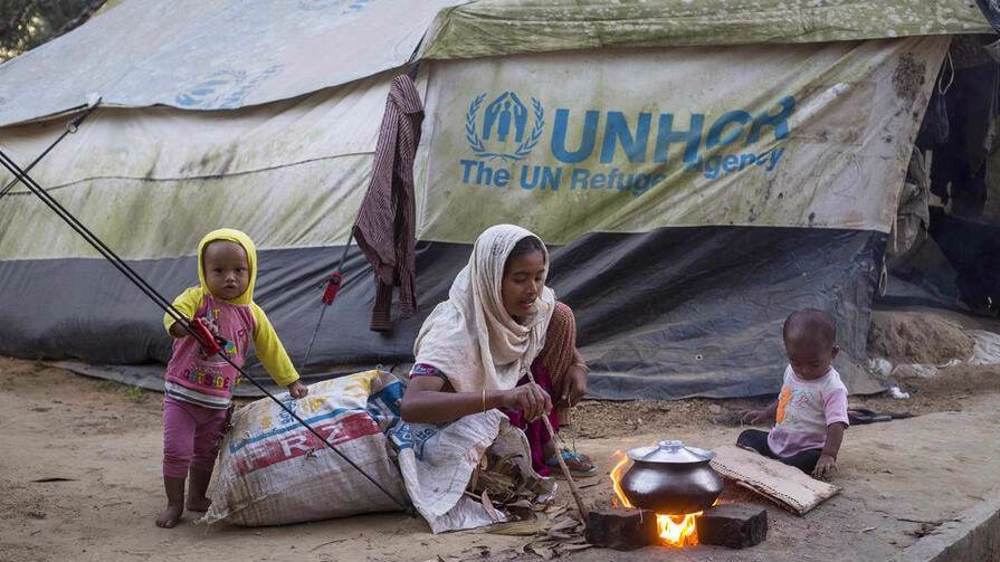14 killed, 16 missing after Typhoon Hagibis pounds Japan
More than a dozen people have been confirmed dead in Japan after a powerful typhoon roared across the country with unprecedented rains, local media reported.
The Kyodo news agency said on Sunday that the number of people who have lost their lives as a result of Typhoon Hagibis in Japan has increased to 14, while at least 16 more remain missing.
The people died in landslides and others were swept away by floodwater in their cars as rivers broke their banks after torrential rain.
The Japan’s TBS broadcaster reported that the disaster had left about 150 people injured.
Japan sent tens of thousands of troops and rescue workers on Sunday to save stranded residents and fight floods caused by one of the worst typhoons to hit the country in recent history.
The typhoon has paralyzed Tokyo, causing rivers to overflow and leaving almost half a million homes without power.

Japanese authorities on Saturday issued the highest weather emergency level for seven of the nation's prefectures, including Tokyo, due to approaching Super Typhoon Hagibis.
Typhoon Hagibis was expected to head out to sea on Sunday evening after churning its way up the northern island of Hokkaido.
Prime Minister Shinzo Abe convened an emergency meeting of relevant ministers and dispatched the minister in charge of disaster management to the worst-hit areas. He offered condolences to the families of those who died and said the government was working to save people's lives and property.

"The government will do everything in its power to cooperate with relevant agencies to restore services as soon as possible," said Abe. The government has also set up a task force to deal with the damage, NHK reported.
The full extent of the damage was only beginning to emerge because it was widespread and many areas were still under water.
Some 425,000 homes were without power, the government said, reviving fears of a repeat of the weeks-long power outages suffered after another typhoon hit east of Tokyo last month.
Japanese airports earlier canceled 1,929 international and domestic flights due to the approaching storm.
In Fukushima, north of the capital, Tokyo Electric Power Co reported irregular readings from sensors monitoring water in its Fukushima Daiichi nuclear plant overnight. The plant was crippled by a 2011 earthquake and tsunami.

NHK showed swaths of low-lying residential areas inundated in parts of central and eastern Japan by overflowing rivers, with some of the worst damage caused by Chikuma river in central Japan's Nagano prefecture.
NHK showed military helicopters airlifting stranded residents from homes near the river, after they got trapped by massive quantities of brown water reaching the roofs of their houses.
Tokyo was returning to regular life with stores reopening and trains resuming operations. The buzz of rescue helicopters and wailing of fire engine sirens was the main remainder that emergency services were still working to help the residents.
Authorities issued evacuation advisories and orders for more than 6 million people across Japan as the storm unleashed the heaviest rain and winds in years.
(Source: Agencies)
Israeli strike kills one in southern Lebanon: State media
Ukraine says it can hold frontline as Trump suspends all military aid
'Red line': Hamas rejects Israel’s demand for ‘full demilitarization’ of Gaza
VIDEO | Ramadan transforms streets into vibrant celebrations in Iran
Until we meet again: A letter to the ‘master of resistance’ Sayyed Hassan Nasrallah
Unraveling Iran’s puzzle of assets frozen abroad
Indian worker shot dead in Jordan trying to enter Israeli-occupied territories
Leader’s advisor warns Turkish officials against repeating baseless claims about Iran









 This makes it easy to access the Press TV website
This makes it easy to access the Press TV website